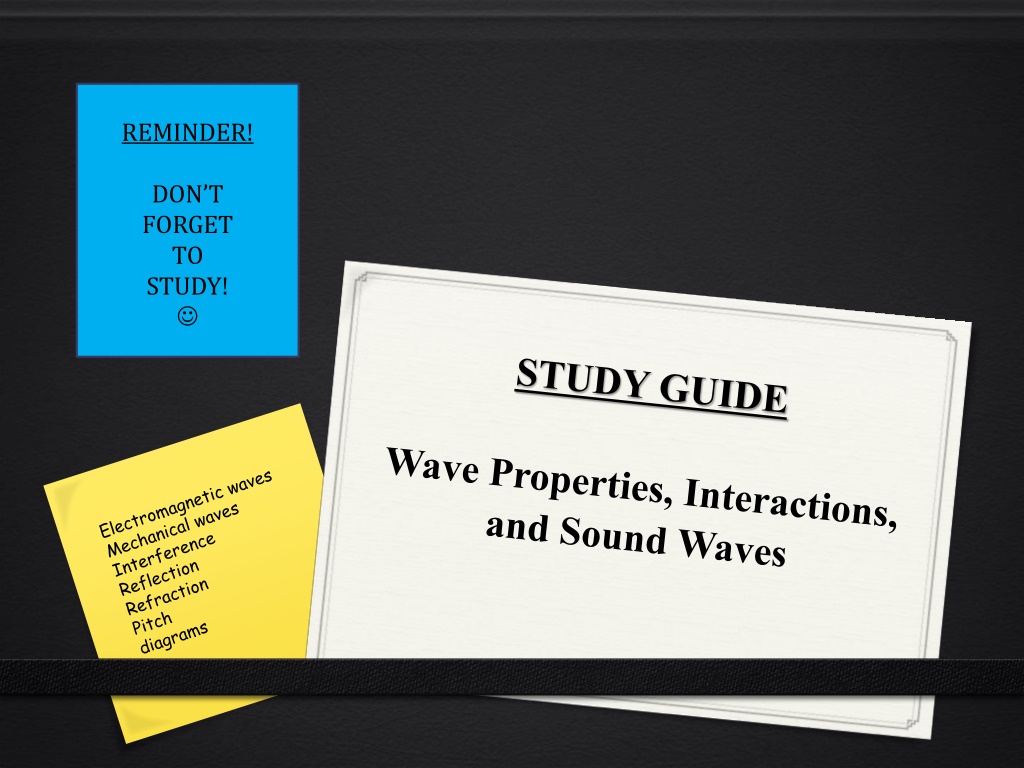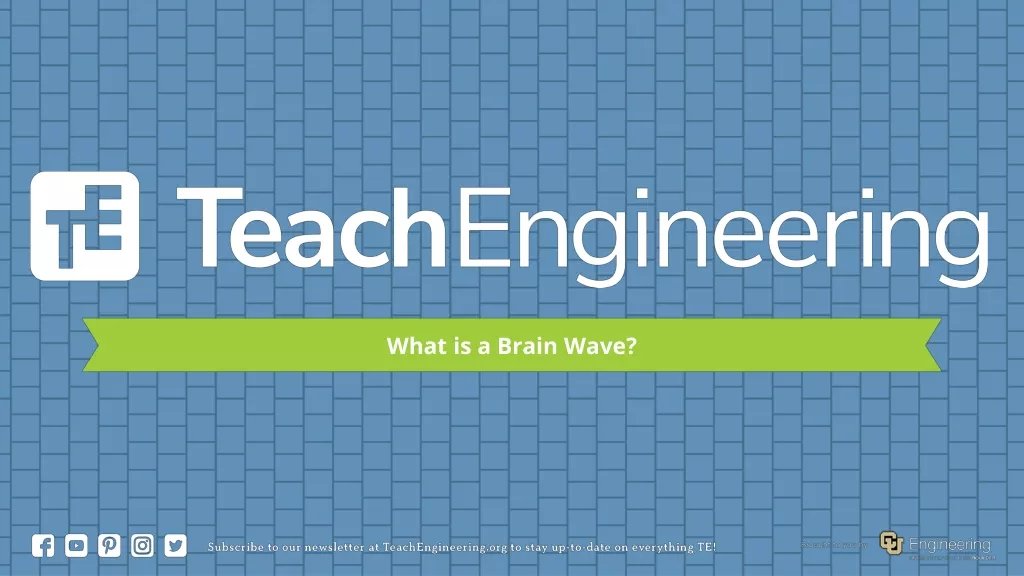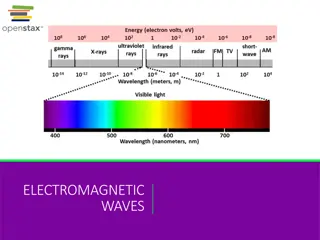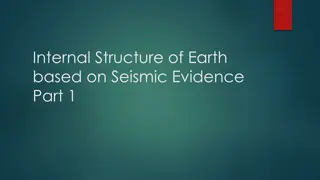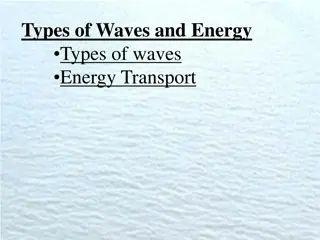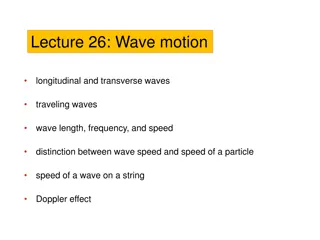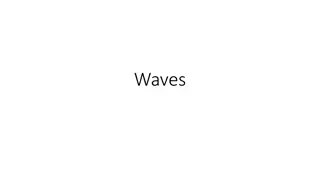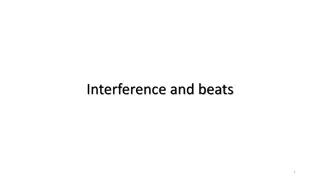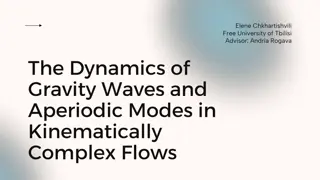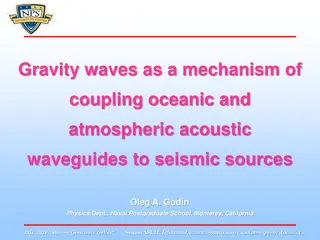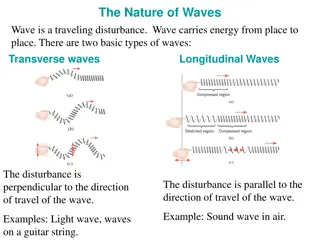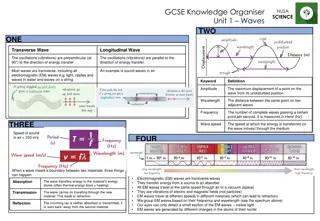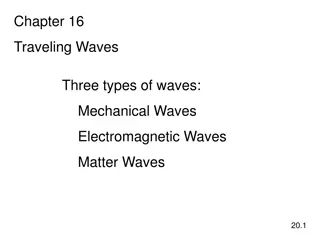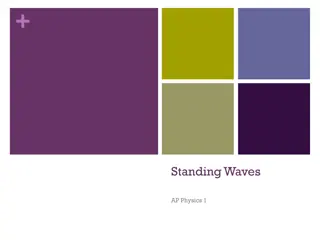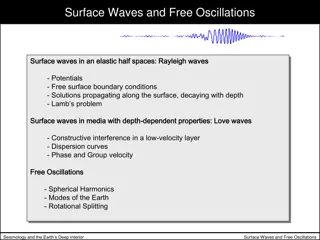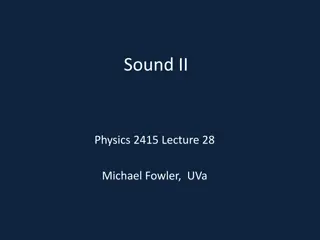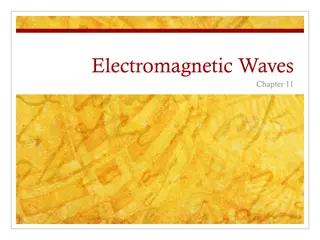Waves: Definitions and Characteristics
This educational content covers definitions and characteristics of waves, including transverse and longitudinal waves, how waves travel through a medium, interference, earthquake waves, sound properties like amplitude and pitch, the Doppler Effect, and differences between reflection and refraction.
Download Presentation

Please find below an Image/Link to download the presentation.
The content on the website is provided AS IS for your information and personal use only. It may not be sold, licensed, or shared on other websites without obtaining consent from the author.If you encounter any issues during the download, it is possible that the publisher has removed the file from their server.
You are allowed to download the files provided on this website for personal or commercial use, subject to the condition that they are used lawfully. All files are the property of their respective owners.
The content on the website is provided AS IS for your information and personal use only. It may not be sold, licensed, or shared on other websites without obtaining consent from the author.
E N D
Presentation Transcript
REMINDER! DON T FORGET TO STUDY!
1. Define the following words: a. Crest the highest part of a transverse wave. b. Trough- the lowest part of a transverse wave c. Amplitude-the height of a wave; the distance from the line of origin to the crest or the trough. d. Frequency-the number of crests of a wave that move past a point in a given time. e. Wavelength the distance between successive crests of a wave (measure crest to crest) 2. What is a wave? A disturbance that transfers energy from place to place.
3. How do waves travel through a medium? The energy (vibrations) pass from particle to particle in a medium 4. Draw and label a diagram of a transverse wave. Be sure to include the following parts: a. Crest b. Trough c. Amplitude d. Wavelength
5. Draw and label a diagram of a Compression wave. Be sure to include the following parts: a. Wavelength b. Compression c. Rarefaction 6. Describe the characteristics of a longitudinal wave. Looks like a spring. Energy moves in the same direction as the wave Describe the characteristics of a transverse wave. 7. S shaped waves. Wave moves at right angles from the direction the wave travels.
8. Describe what happens during destructive interference. waves combine to produce a smaller wave or a zero amplitude wave. (Remember: The waves are competing so they end up cancelling each other out. Example- dead zones/seats in an old theater) Waves produced by earthquakes are called Compressional waves. 9. Earthquakes initially produce P waves (longitudinal waves) as they form below the surface. The waves that happen on the surface of the land after the P wave has moved through are S (transverse) waves. 10. The interaction of two waves that meet is called Interference. 11. What is the unit measure of frequency? hertz
12. What influences the speed of sound? the medium in which it is traveling. Remember the old western movies- ear to the ground vs. listening to the air. 13. How does amplitude affect sound? If affects how loud the sound is. Higher amplitude = louder sound 14. Loudness is measured in decibels. 15. What is pitch? How high or low a sound seems to a person.
16. The pitch of a sound depends on the waves frequency. 17. Explain and give an example of the Doppler Effect. The change in frequency of a wave for an observer relative to its source. 18. What is the difference between reflection and refraction? When a wave is reflected it bounces off an obstruction. When a wave is refracted it bends around or through an obstacle.
19. What is the difference between constructive and destructive interference? Constructive interference is when two waves come together to produce a wave with larger amplitude (Think-fight song at a football game). Destructive interference is when the crest of one wave meets the trough of the other and the two waves cancel each other out. (Remember singing rounds, or the dead zone in the theater) 20. Explain why we can see rainbows after a summer rain. After a rain shower light waves pass through suspended water droplets in the sky. The light waves of various colors slow down at different rates, bend and separate. 21. Explain how bats navigate using sound. What is this process called? Bats emit a sound wave and they listen for the echo. They can tell how far away an object is by how long it takes for the sound to echo back. This process is called echolocation.
22. Describe what happens if a wave moves through an opening in a barrier. It bends and spreads out. 23. Why do you see lightning before you hear thunder? Light travels faster than sound. 24. What type of wave is sound? How does it travel through a medium? Compression wave (longitudinal wave). The vibrations are passed particle to particle through the medium in the same direction as the wave.
25. What is the relationship between frequency and wavelength? Inverse relationship. Ex: High frequency = short wavelength or low frequency = longer wavelength. 26. What is the relationship between frequency and sound? A The pitch of a sound depends on a wave s frequency , so higher frequency = higher pitch. 27. What is the difference between an electromagnetic and a mechanical wave? Electromagnetic waves do not need a medium. 28. Explain how density is related to compressions and rarefactions in sound waves? Differences in density cause the wave to compress or stretch out to create rarefactions as it moves through a medium.
